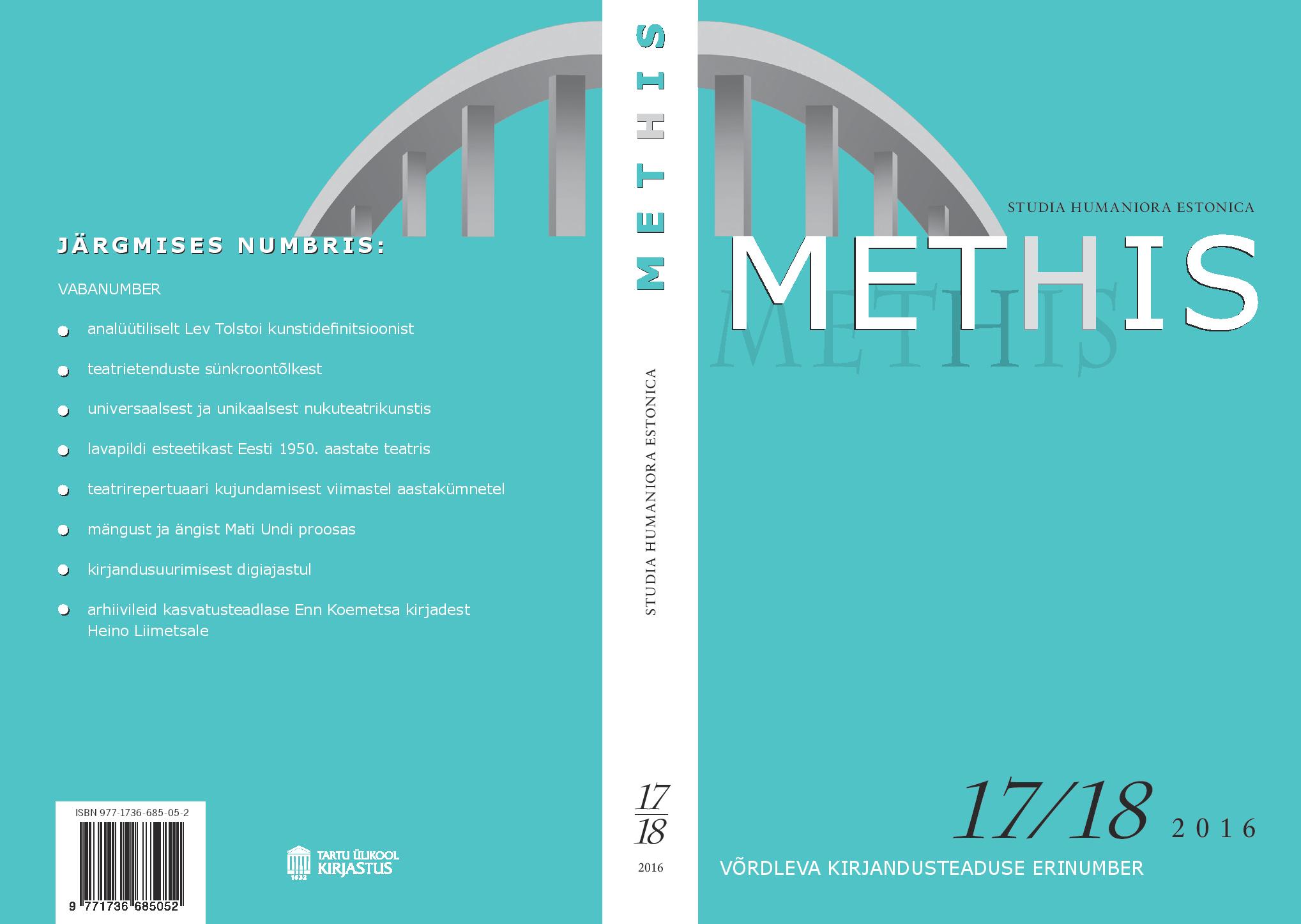Maamesilasena maailmas ehk lihtsalt Jüri Talveti meetodist / On Jüri Talvet’s Comparative Method
DOI:
https://doi.org/10.7592/methis.v14i17/18.13210Keywords:
eesti kirjandus, maailmakirjandus, võrdlev kirjandusteadus, uurimismeetodid, Jüri Talvet, Estonian literature, world literature, comparative literary science, research methodsAbstract
Teesid: Artikkel defineerib maailmakirjanduse professor Jüri Talveti komparativistlikku meetodit nii maamesilase metafoori kui ka tema poolt tutvustatud mõistete edaphos (’pind’) ja episteme (’teadmine’) kaudu. Võrdleva kirjandusteadlase ülesanne on kahesuunaline: tutvustada eesti kirjandust maailmas ja vahendada mujal loodut meie kultuurile. Kuigi õpetlaste teoreetiline metasüsteem ja mõistevõrk – episteme – võib areneda väga keeruliseks, peab see alati juurduma edaphos’es kui toitvas pinnases, mille loovad sõnakunstiteosed ja rahvuslikud kirjanduslood. Avardades võrdlevat edaphos’t, aktiveerime ja rikastame ka maailma episteme’t.
The article aims at defining the comparative method of Jüri Talvet, professor of comparative literature. This can be carried out by an application of Talvet’s own metaphor for himself – a bumble bee, or via two concepts elaborated by him – edaphos (base) and episteme (knowledge). The bumble bee, by nature more reclusive and peaceful but somehow more attractive looks than a regular bee flies out from its modest sod nest across blooming meadows, disseminating homely pollen among the leaves of grass of the wide world. Then it faithfully returns with nourishing nectar that feeds its family. As chairman of the Estonian Comparative Literature Association, and founder and editor-in-chief of the comparative literature journal Interlitteraria, Talvet has written: “Its purpose is to channel new literary-philosophical ideas from the international area to Estonia and, at the same time, to spread knowledge about Estonian literary and philosophical studies outside Estonia, as well as to let the wider world have some idea of Estonian literature itself which, because of the language barrier, has belonged traditionally to the majority of “silent” literatures of the world, unjustly ignored by the area of the dominant Western languages.” Yet, no matter how complex our theoretical meta-systems and conceptual framework – episteme – might develop, it always needs to be firmly based on edaphos as its foundation, that is, on works of literature and national literary histories. By extending the comparative edaphos, we also enrich the world’s episteme. It is therefore not surprising that, as a scholar with extensive knowledge of world literature, Talvet has great affinity for tellurism, an aesthetic concept used in Hispanic cultures that is largely unknown to the English-speaking world.


